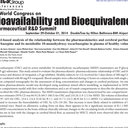Neuron-specific enolase in patients with neurocysticercosis.
Anahtar kelimeler
Öz
BACKGROUND
Neurocysticercosis (NC) is the most frequent parasitic disease of the human nervous system. Its clinical manifestations are varied and depend on the number and location of cysts, as well as the host immune response. Symptoms in NC usually occur when cysts enter into a degenerative phase associated with perilesional inflammation. We speculate that neuron-specific enolase (NSE)--a marker of neuronal injury--could be elevated in patients with degenerating cysts comparing to those with viable cysts.
METHODS
We examined serum NSE (sNSE) and cerebrospinal fluid (CSF) NSE (cNSE) levels in 25 patients with NC: 14 patients with degenerative cysts (D), 8 patients with viable cysts (V) and 3 patients with inactive cysts. Samples of eight normal controls (C) were also obtained. Determination of albumin was performed in serum and CSF samples, and the CSF/serum albumin ratio (albumin quotient, Q(alb)) was used to estimate the blood-brain barrier permeability.
RESULTS
All patients, with the exception of one case, had five or less cysts. Comparisons between V, D and C groups did not demonstrate significant differences of cNSE, Q(alb) and sNSE levels. Further, there were no significant differences of cNSE and sNSE levels between patients with or without intracranial hypertension (ICH).
CONCLUSIONS
These findings suggest that the inflammatory response associated with a relatively small number of degenerating cysts does not provoke significant neuronal damage. Further studies considering patients with a larger number of cysts will be required to assess if there is evidence of neuronal damage in such more severe cases.



